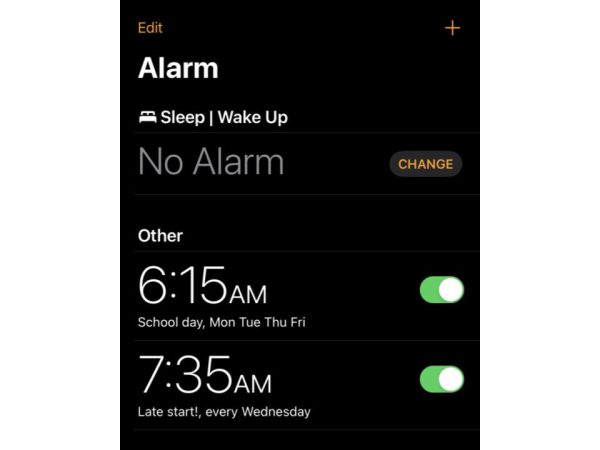Nothing Unexpected: results from the midterm elections
Midterm Election Post Analysis
It’s official–the Midterm Elections are complete. Over three weeks after November 6, almost every unresolved race has been called and an unexpectedly competitive Senate runoff occurred in the Deep South. Democrats had a good night overall, with some upsets on both sides, but the general results were not drastically different than expected. Now let’s go over a bit about each chamber.
Senate: 53R/47D Republican Gain: 2 Seats
My prediction was generally reflective of the results of the Senate elections. Though Democrats took the House comfortably, the disproportionate number of Democratic Senators up for re-election, and Trump’s campaigning on the eve of the election, took its toll. My final seat prediction was a GOP net gain of 1, 52 Republicans to 48 Democrats; the final result was a net gain of 2. These are the elections that surprised me:
Nevada: A somewhat perplexing race with trading leads between Dean Heller and Democratic Representative Jacky Rosen ended up with Rosen winning by a decent 5% margin. It was a good night for Nevada Democrats overall; their candidates won 2 competitive open seat House races by larger than expected margins and Clark County Commissioner Steve Sisolak won the open Governors seat.
Indiana: Moderate Democratic Incumbent Joe Donnelly, considered somewhat of an “accidental” Senator after facing a flawed opponent in 2012, lost by 5% after appearing to have gained some ground in recent weeks. President Trump campaigned hard with Mike Braun, a former State Legislator with an outsider persona who defeated two Republican Congressmen in the primary. Vice President Pence is a Hoosier and Trump won the state by almost 20% with his help.
Florida: Governor Rick Scott ousted Democratic Senator Bill Nelson in the closest Senate election of the cycle by 0.1% after a recount and 2 weeks of uncertainty. Nelson had been considered a modest favorite for several weeks prior to the election, so this was a disappointing result for Democrats in Florida and across the nation. President Trump’s approval ratings have held up well compared to other very close 2016 states, and an incumbent Senator losing in a national environment where Democrats won the vote by 8% suggests the swing state is taking on a redder hue.
Interesting Notes: Texas was closer than expected; media rockstar Beto O’Rourke came less than 3% within unseating Ted Cruz and helped to carry 2 House candidates to the finish line on his coattails as well as causing a number of very close races in Safe Republican districts. In Tennessee, former Governor Phil Bredesen fell quite short of expectations, losing by over 10% to controversial Congresswoman Marsha Blackburn.
A special election primary took place in Mississippi on election day, when appointed Senator Cindy Hyde-Smith and former Secretary of Agriculture advanced to a runoff after neither broke 50%. After Hyde-Smith made very controversial comments about public hangings, Democrats saw an opening here and went into the November 27th election with some hope that the race had tightened. Mississippi is an incredibly racially polarized state where about 90% of whites vote Republican and over 90% of blacks vote Democratic, so though it is the state with the highest black population it is nearly impossible to win and has few swing voters. Hyde-Smith won 54%-46% when most Republicans expect to win by 20%, and Espy performed better than any Democrat running for Senate since 2000.
House: 235D/200R Democratic Gain: 40 Seats
Democrats overperformed my expectations in the House of Representatives, with a net gain of 40 seats compared to my prediction of 28. For reference:
Wrong Predictions with Margin of Victory
| Tilt D | Tilt R | Lean R | Likely R |
| KS-2: R+1.7 | CA-25: D+8.4 | SC-1: D+1.4 | OK-5: D+1.4 |
| KY-6: R+3.2 | FL-26: D+1.8 | CA-21: D+0.5 | |
| MN-1: R+0.4 | IL-14: D+3.8 | ||
| PA-1: R+2.6 | ME-2: D+1 | ||
| MI-8: D+3.8 | |||
| NM-2: D+1.4 | |||
| NY-11: D+6 | |||
| TX-7: D+5 | |||
| TX-32: D+6.3 | |||
| UT-4: D+0.2 | |||
| VA-2: D+2.2 | |||
| WA-8: D+5.2 | |||
| GA-6: D+1 |
Upsets
South Carolina 1st District : Democrat Joe Cunningham defeated State Representative Katie Arrington by a very close margin in a race that shouldn’t have been competitive in the first place; the district is usually pretty red turf, but Arrington unseated incumbent Representative Mark Sanford in the Republican primary running far to his right and pointing out instances where he didn’t agree with President Trump. Such a close win caused some division within the party and enough moderate Republicans switched sides to vote for Cunningham.
Oklahoma 5th District : Probably the biggest upset of the night was in the Oklahoma City based 5th District where Democrat Kendra Horn defeated incumbent Republican Steve Russell. This was just barely on my radar; Trump won the district by 13% and a few local polls showed Russell leading by slightly less than that, plus an outside PAC spent a lot of money in support of Horn in the final week. Several factors were at play in Russell’s defeat; changing demographics and partisanship as well as a relatively strong performance by gubernatorial candidate Drew Edmondson, who won the district by 7% despite losing statewide by 12%.
California 21st District : Republican David Valadao was considered a popular incumbent but also represents quite a blue district that voted for Hillary Clinton by 16% in 2016 and has the same voter registration advantage for Democrats. Both Democratic and Republican groups decided against spending here in the final weeks because it was thought that TJ Cox was a weak candidate and Valadao had a pretty solid lead, though he would be a top tier target in 2020. Most networks called the race for Valadao on election night as he appeared to lead by around 8%, but as with all close races in California the result swung heavily towards the Democrat as more ballots were counted. On November 26th, the AP finally retracted its call when Cox took the lead by 0.4%, and he appears almost certain to win.
UNCALLED: North Carolina 9th District
One of the most surprising races that has developed after election day is in North Carolina´s 9th District, where Republican Mark Harris appeared to defeat Democrat Dan McCready on election day by about 900 votes, or 0.3%. However, in late November the bipartisan North Carolina Board of Elections voted 9-0 to refuse to certify the results, citing evidence of election fraud. In the last week, it has been revealed that Harris’ campaign paid a convicted felon known for absentee ¨milling¨ and that hundreds of ballots were tampered with or thrown away in favor of the Republican candidate. This is a rare clear case of election fraud with many witnesses including people who were paid by the contractor to illegally collect ballots. The most likely scenario at this point in time is that the Board will call a new general election without a new primary because that result has been certified; in that case the race would start at Lean D.
Interesting Notes: Though Democrats made gains across the board, by far their biggest improvements were in upscale suburbs, further defining their struggles in rural areas. A fantastic example of this effect in one state is Minnesota. Republicans picked up two open Democratic seats, one in the rural Southern part of the state and one in working class Duluth. Democrats simultaneously flipped two suburban seats in the central part of the state.
Overall, the best state for Democrats was California; they flipped 7 seats in the state including one rated as Likely R. They also had a very good night in New Jersey, picking up 4 seats for an 11-1 Democratic delegation.
Governor
A quick note on the many gubernatorial elections which also took place; Democrats flipped 7 GOP states and Republicans flipped Alaska, which was formerly held by Independent Bill Walker. Two progressive African-American candidates in the South, Andrew Gillum in Florida and Stacey Abrams in Georgia, fell short of victory.
Democrats feel very good about 2020 after solid victories in Midwestern states that swung heavily towards Trump in 2016, and came close in Iowa and Ohio, both of which the President won by nearly 10%. This news does not bode well for President Trump, who will need to focus heavily on this region in his already fragile reelection bid.
Watch out for 2019 as a potential signal of the state of play going into 2020; three Governorships in the South are up for election, and all three are expected to be competitive. I may go over these races as the candidates announce, as I will likely do for the Presidential e
Nick has been a club member for several years, mostly writing stories on national and local politics, as well as being a co-host of the Wise Duke Podcast....












